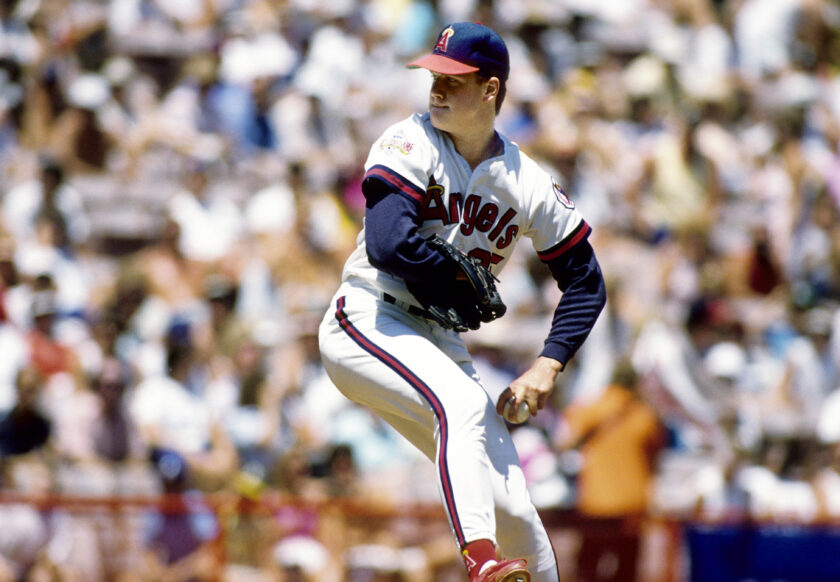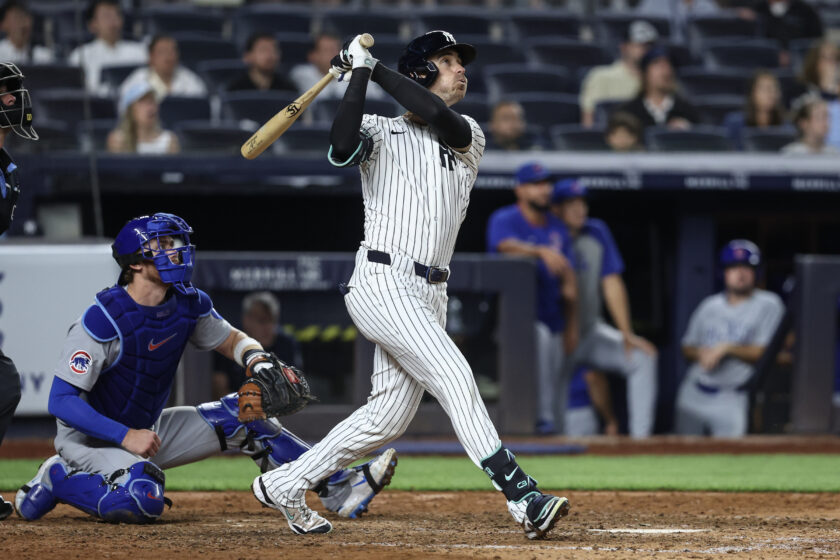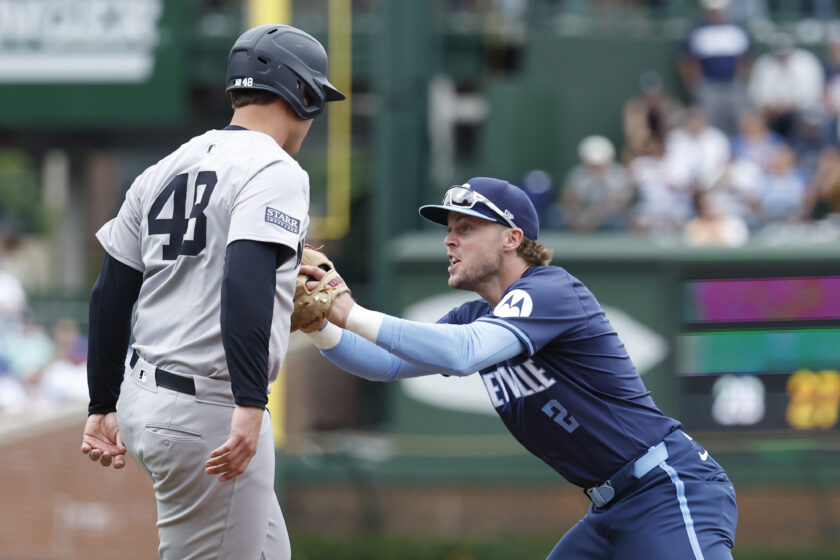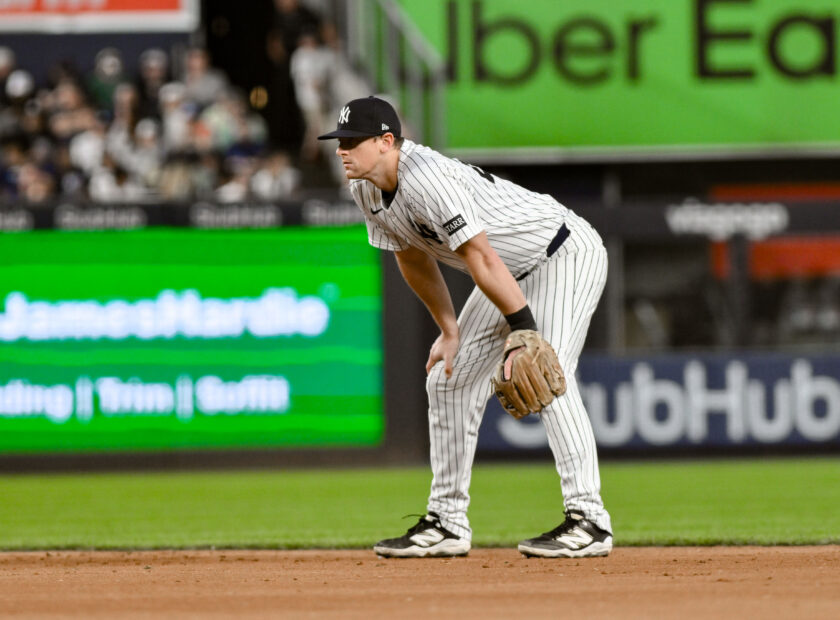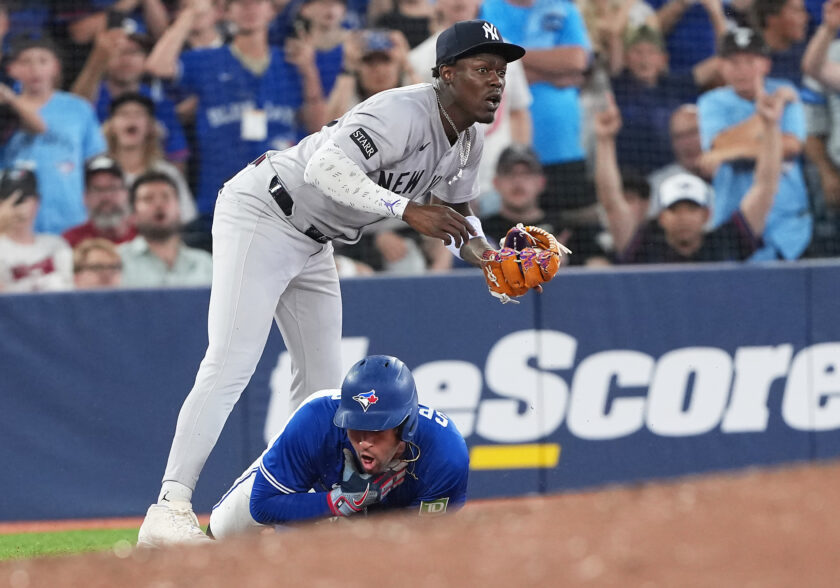Five New York Yankees right fielders you forgot existed

Sprinkled in between eras of notable right fielders, the New York Yankees have had a few obscure gems put on the pinstripes too.
[sc name=”josh-benjamin-banner” ]Much like they do centerfield, as we learned last week, the New York Yankees have a knack for knowing the right side of the outfield.
Unlike center, Hall of Fame talent doesn’t define the position. Besides Babe Ruth, Yankees right fielders have usually been very good players, as opposed to what most would consider great.
Mind you, that isn’t a knock against other players who have grown friendly with Yankee Stadium’s short porch. Roger Maris became a national story in 1961 as he chased Ruth’s single-season home run record. Reggie Jackson’s brash personality paved the way for Paul O’Neill‘s fiercely competitive nature. Hank Bauer defined consistency, and Nick Swisher was just plain fun.
But what those men all have in common with one another is simple. All of them put on a New York Yankees uniform for at least three years, and they all won World Series rings too. Others, meanwhile, either got stuck playing on bad teams or just didn’t stay in the Bronx long enough.
Even still, that doesn’t take away from what they did accomplish while playing for the Yankees. Today, we honor five Yankees right fielders we should remember more often than we do.
No. 5: Bobby Bonds (Yankees tenure: 1975)
Most fans know Bobby Bonds because of his superstar son, Barry. However, many also forget the elder Bonds too had a successful MLB career. He was a three-time All-Star, including his lone Yankees season, and retired with 332 career home runs. Bonds also took home three Gold Glove Awards.
And though Bonds finished his career as an overall average right fielder, he was great in his prime. He had a gun for an arm and posted a 5.3 total WAR as a Yankee.
And how did Bobby Bonds come to leave the San Francisco Giants for the Big Apple? Well, in a fairly controversial trade, the Yankees acquired him for fan-favorite Bobby Murcer shortly after the 1974 season ended. Murcer was long considered the heir to Mickey Mantle, so the move came as a shock.
But Bonds made his presence known quickly. He posted an excellent line of .270/.375/.512 with 32 homers and 85 RBIs in what would be his last All-Star season. Bonds also stole 30 bases as the Yankees finished third in the AL East, with a rebirth seeming imminent.
Unfortunately, Bonds wouldn’t stay for any of it. Just over a year after being traded to the Yankees, he was dealt to the California Angels for Mickey Rivers and Ed Figueroa. Both became key members of the 1977 and 1978 World Series-winning Yankees teams.
Still, fans who remember Bonds know he easily could have been great had he stayed in New York.
No. 4: Danny Tartabull (Yankees tenure: 1992-1995)

Danny Tartabull knew how to mash baseballs. He already had 152 career home runs with the Seattle Mariners and Kansas City Royals over his first eight MLB seasons. Thus, the New York Yankees had no problem giving the 29-year-old a five-year, $25.5 million deal in 1992.
As a fielder, Tartabull was less than average and the Yankees compensated by mostly using him as a designated hitter. Given how they signed him for his power, this proved to be the right choice. Danny Tartabull would go on to hit an average .252 in New York, but also had a respectable OBP of .372.
Tartabull did not disappoint with his power either. He slugged 82 home runs in pinstripes before being traded to the Oakland A’s for Ruben Sierra in 1995. This helped both sides as Sierra was more consistent than Tartabull, and Tartabull had fallen out with owner George Steinbrenner.
Still, Tartabull’s power was a big part of the New York Yankees’ rebirth in the 1990s.
No. 3: Jesse Barfield (Yankees tenure: 1989-1992)

When the New York Yankees traded young pitching prospect Al Leiter to the Toronto Blue Jays for Barfield early in the 1989 season, it was expected the team would get a power-hitting outfielder with a strong arm.
Initially, Barfield was as advertised. Still just 29 years old, he hit .240 with 18 home runs and 56 RBIs in New York that year. Barfield then hit 25 home runs with 78 RBIs in 1990 despite a meager .246 average, and was still an overall average fielder with an arm comparable to the jet propulsion on Iron Man’s suit.
Unfortunately, the honeymoon was short-lived. Injuries limited Barfield to 114 games over the next two years as the Yankees crashed and burned. He wasn’t re-signed and spent one year playing in Japan.
He may not have lived up to initial expectations, but Jesse Barfield made the New York Yankees exciting in his own small way. Even as the team struggled, his power bat and strong arm provided slivers of hope for fans.
No. 2: “Wee” Willie Keeler (Yankees tenure: 1903-1909)
Listed at 5-foot-4, 140 pounds, Willie Keeler’s nickname was accurate. The Hall of Famer and Brooklyn native was already 31 when he signed with the Yankees, then known as the New York Highlanders. Keeler had already won two batting titles with the original Baltimore Orioles of the National League and was a .371 career hitter at this point. For a new American League team, signing him was a big deal.
The Highlanders never finished higher than second during Keeler’s run with them, and he hit the decline hard midway through his tenure. He hit just .315 in his first four Highlander seasons before age and injuries took over for his final three. Keeler then spent a forgettable 19 games with the New York Giants.
And even though Keeler wasn’t the most effective right fielder for who would eventually become the Yankees, he was still a Hall of Fame talent. He was inducted into Cooperstown in 1939, 16 years after he died way too young at 50 years old.
More importantly, the American League was a fledgling league in the early 20th century. Keeler playing for the Highlanders helped legitimize it as one that could keep up with the old guard of the National League. For that, he gets recognized here.
No. 1: Tommy Henrich (Yankees tenure: 1937-1942, 1946-1950)

Tommy Henrich was an absolute workhorse for the New York Yankees despite being a position player. The lefty-swinging Ohioan signed with the Yankees as a free agent in 1937, and the rest is history. Henrich became a solid fielder who could play all three outfield positions and also spent some time at first base.
At the plate, Henrich’s tale is one of two careers. He posted a line of .281/.382/.487 while taking home two World Series rings. Then, Henrich served three years in the Coast Guard during World War II before returning to the Yankees as a 33-year-old in 1946.
And even as an older player by baseball standards, Henrich was still a remarkably consistent player. He hit .283 the rest of the way and finished his career with a walk rate (BB%) of 13.2% compared to a strikeout rate (K%) of 7.1%. Oh, and did I mention Henrich led the AL in triples as a 34 and 35-year old? Henrich also led the majors in runs scored in 1948, a testament to his ability to get on base.
Five All-Star selections, four of which were after the war. Four World Series rings, not to mention batting .262 with four home runs and eight RBIs in the Fall Classic, plus another ring won as a Yankees coach in 1951. Henrich was the definition of consistency and hard work, and the numbers show it.
Josh Benjamin has been a staff writer at ESNY since 2018. He has had opinions about everything, especially the Yankees and Knicks. He co-hosts the “Bleacher Creatures” podcast and is always looking for new pieces of sports history to uncover, usually with a Yankee Tavern chicken parm sub in hand.

